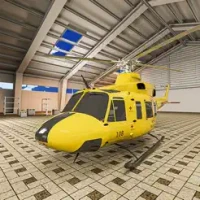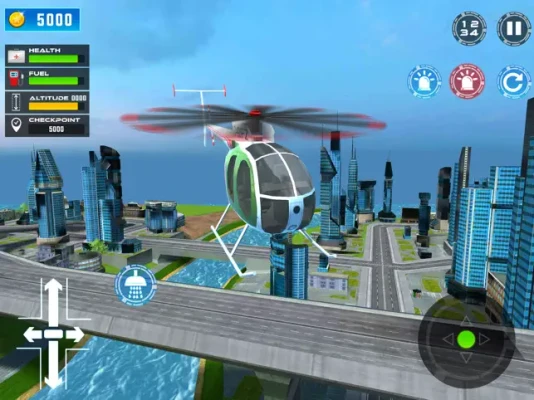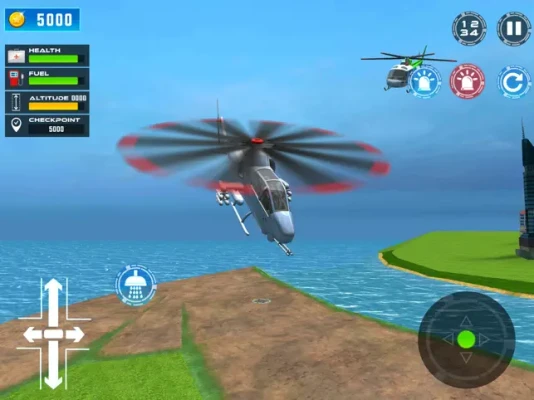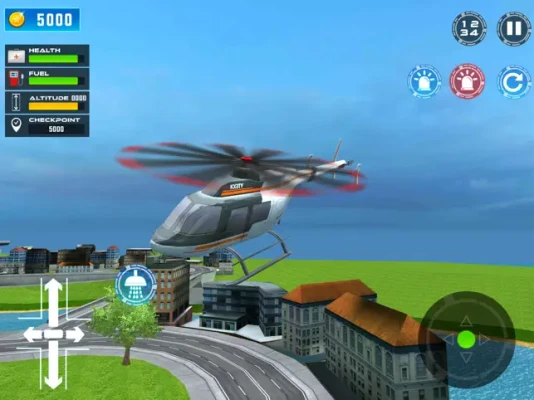
Latest Version
1.1\"},{\"releaseDate\":\"2022-11-19
October 28, 2025
Helicopter Flight Pilot Rescue
Games
iOS
179.4 MB
0
Free
Report a Problem
More About Helicopter Rescue Missions Sim
Mastering Flight: Navigating Weather Challenges for Pilots
When it comes to aviation, understanding and adapting to weather conditions is paramount. Pilots must assess the weather for their flights, and those who dare to fly through storms or in low visibility conditions truly elevate their skills. This article delves into the intricacies of flying in challenging weather, highlighting the essential skills that separate seasoned pilots from novices.
The Importance of Weather Assessment
Before embarking on any flight, a thorough weather assessment is crucial. Pilots must evaluate various factors, including wind speed, precipitation, and visibility. These elements can significantly impact flight safety and performance. By staying informed about current weather conditions, pilots can make educated decisions that enhance their flying experience.
Flying Through Storms: A Test of Skill
Flying through storms is not for the faint-hearted. It requires a deep understanding of meteorological phenomena and exceptional piloting skills. Experienced pilots often embrace the challenge of navigating turbulent weather, as it tests their abilities and sharpens their instincts. Here are some key considerations when flying through storms:
- Understanding Storm Dynamics: Familiarize yourself with the characteristics of different storm types, such as thunderstorms and squall lines. Recognizing their patterns can help you anticipate changes in weather conditions.
- Utilizing Advanced Technology: Modern aircraft are equipped with sophisticated weather radar systems. Pilots should leverage these tools to identify storm cells and make informed decisions about their flight path.
- Maintaining Situational Awareness: Constantly monitor your surroundings and stay updated on weather changes. This vigilance is crucial for making real-time adjustments to your flight plan.
Low Visibility Flying: Enhancing Your Skills
Flying in low visibility conditions, such as fog or heavy rain, presents unique challenges. Pilots must rely on their instruments and training to navigate safely. Here are some strategies to enhance your skills in low visibility:
- Instrument Proficiency: Mastering your aircraft's instruments is essential. Pilots should practice flying solely by reference to their instruments to build confidence and competence.
- Communication is Key: Maintain clear communication with air traffic control and other pilots. Sharing information about visibility conditions can help ensure safety for everyone in the airspace.
- Practice Makes Perfect: Regularly simulate low visibility scenarios during training sessions. This practice will prepare you for real-life situations and improve your decision-making skills.
High Altitude Flying: The Pinnacle of Pilot Skill
Flying at high altitudes offers breathtaking views and unique challenges. It requires a deep understanding of aerodynamics and environmental factors. Here’s what you need to know about high altitude flying:
- Aerodynamic Control: At higher altitudes, the air is thinner, which affects lift and control. Pilots must adjust their techniques to maintain optimal performance.
- Ambient Perception: Understanding how altitude affects weather patterns is crucial. Pilots should be aware of potential turbulence and temperature changes that can occur at higher elevations.
- Emergency Preparedness: High-altitude flying may require quick decision-making in emergencies. Pilots should be trained in altitude-related emergencies, such as hypoxia, to ensure safety.
Mountain Flying: The Need for Rescue Skills
Flying in mountainous regions presents its own set of challenges. The terrain can be unforgiving, and pilots must be prepared for emergencies. Here are some essential skills for mountain flying:
- Terrain Awareness: Familiarize yourself with the geography of the area. Understanding the terrain can help you navigate safely and avoid potential hazards.
- Rescue Techniques: In mountainous areas, the likelihood of needing to perform a rescue increases. Pilots should be trained in search and rescue operations to assist those in distress.
- Weather Variability: Mountain weather can change rapidly. Pilots must be adept at recognizing signs of changing conditions and adjusting their flight plans accordingly.
Conclusion: Elevating Your Piloting Skills
In conclusion, mastering the art of flying in challenging weather conditions is a hallmark of a skilled pilot. By understanding weather dynamics, honing your instrument proficiency, and preparing for emergencies, you can elevate your flying experience. Whether navigating storms, flying in low visibility, soaring at high altitudes, or tackling mountainous terrain, the key to success lies in continuous learning and practice. Embrace the challenges of aviation, and you will become a proficient and confident pilot.
Rate the App
User Reviews
Popular Apps










Editor's Choice






























